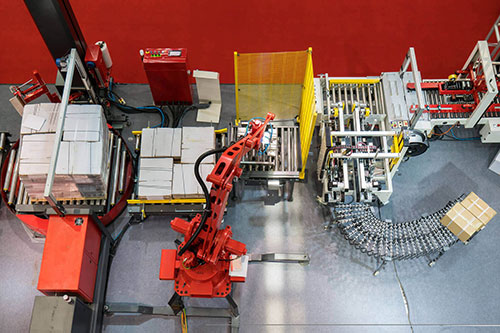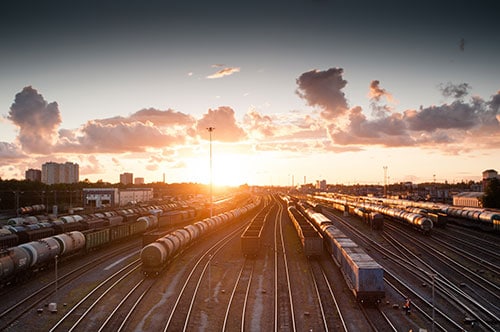The Internet of Things
How the Internet of Things will revolutionize your supply chain
A batch of vaccines leaves a pharmaceutical company bound for another continent. Each of the thousands of tiny vials has the potential to save a child’s life. But only if the contents of the container are kept chilled throughout the long journey.
From the moment it is driven away from the loading dock, the batch is being tracked. A chip is recording its location, and whether it is being kept upright. Crucially, the chip is also monitoring the temperature of the vaccines. From refrigerated lorries, cargo holds and warehouses, the chip feeds this information back to both the manufacturer and the medical center that has placed the order. Doctors and medical staff can see where the vaccines are and when they will arrive, certain they are in perfect condition. They can plan an immunization campaign that will keep a village free from a deadly disease for a generation.
All this is possible thanks to the Internet of Things.
What is it?
When we hear about the Internet of Things (IoT), we usually think of smart household appliances that can communicate with a network – for example fridges that keep track of their contents.
But IoT devices can be attached to almost anything. As 5G technology becomes more widespread, tiny chips are able to relay a huge amount of data. These chips could be sewn into the collar of a shirt, embedded to a table leg, or attached to the cardboard packaging of a coffee mug. Anything that you want to track can be tracked.
They can report location and state awareness (temperature, humidity, tilt, etc). The data can be accessed from anywhere in the world in real time – alerting anyone who needs to know about delays, detours, unexpected stops and accidents.

Why does it matter?
For the supply and logistics industry, knowing where the goods are and what state they are in is vital. Huge amounts of time and money are spent logging and tracking consignments, with the reputation of the shipper on the line every time a delivery does wrong. Because supply chains typically involve multiple providers and subcontractors, trust is essential.
IoT devices allow complete visibility. A shipping company will be able to keep track of every stage of the process. There will be no opportunity for products to go astray, be tampered with, or even be replaced by counterfeit goods. Shippers can guarantee quality and security, and keep all stakeholders informed about the progress of the delivery at all times.
Opportunities…
The potential benefits of IoT are enormous.
Data from IoT devices can be encrypted and shared using blockchain, so that customers and suppliers have a real-time record of a transaction as it progresses. This will facilitate instant payments and reduce the need for lines of credit.
Inventory management will be transformed. There is no need for time-consuming and costly stocktakes when there is a guaranteed accurate and reliable record of every item entering and leaving a warehouse.
The data provided by millions of objects travelling all over the world can be analyzed to identify optimal routes. Delays and bottlenecks can be predicted. And different options can then be tailored to each customer depending on priorities: cost, speed, security, and carbon footprint.

…and challenges
There are two major considerations that will affect IoT in the supply chain: disposability and privacy.
For the former, the question is simple – what do you do with the IoT devices and chips when the item has been delivered?
Currently, most of the IoT devices being used for pilots and trials in the supply chain need to be returned to providers, which is expensive and time consuming. However, the cost of the individual devices and chips is falling rapidly. Discarding chips would create vast amounts of electronic waste and is not sustainable in the long run. Recycling schemes, whether run by transport companies themselves or third parties are likely to be an essential part of the business before long.
There are also privacy concerns about whether an item could continue to be tracked once it has been passed to the consumer. How do you know the chip in your TV or even shirt is no longer active? The industry will need to collaborate to establish safeguards and protocols that can win the trust of the public.
Where now?
IoT technology is already being used to track deliveries.
Agility has operated successful pilots with several partners, that have proved the value and efficacy of the technology. We have overcome practical issues such as ensuring IoT devices can be used on commercial cargo aircraft.
There are also a number of companies that offer IoT tracking devices for individual deliveries, such as Roambee.
As 5G is rolled out worldwide, there will be no technical barriers to the widespread adoption of IoT as a standard. High value items, and those that need close temperature monitoring such as pharmaceuticals and fresh or frozen food, are naturally the most likely early adopters. But within a few years, anything that customers or suppliers decide they want to track, will be tracked.
What we are learning
The big lessons in trials with customers are, first, that IoT without a corresponding data strategy is only half the story. IoT expands the data points available to shippers, but without a contextual data science strategy, the data is of little use.
Another lesson is that there is a larger-than-anticipated degree of compliance – whether with governments and regulatory authorities or with transport providers such as airlines – that has to be factored in.
For shippers, the next step is demonstrating where they can extract value from the data. That means using it to generate predictive analysis that strengthens their supply chain.